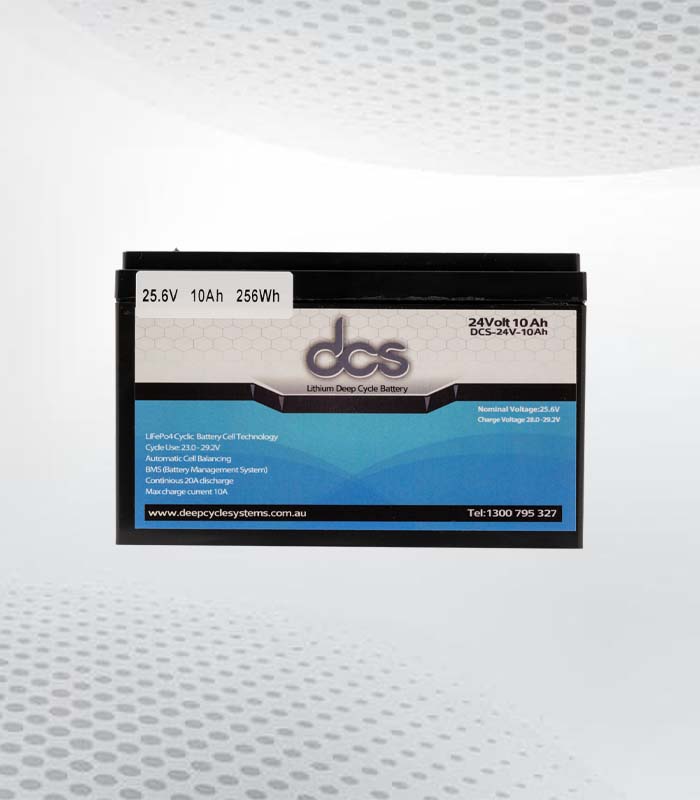
The world of marine power is undergoing a seismic shift, and Lithium Marine Cranking Battery is at the forefront of this transformation. As boating enthusiasts seek greater efficiency and reliability on the water, these advanced batteries are stepping into the spotlight. Gone are the days of relying solely on traditional lead-acid options, which often fell short in performance and longevity. With their lightweight design, rapid charging capabilities, and impressive lifespan, lithium batteries promise to revolutionize how we think about power for our vessels.
How Lithium Batteries Are Revolutionizing the Marine Industry
Lithium batteries transform the marine industry by offering a powerful and efficient alternative to traditional battery systems. Their lightweight construction significantly reduces overall vessel weight, enhancing speed and fuel efficiency. Boaters can now enjoy longer trips without worrying about excessive power consumption.
Moreover, lithium technology enables faster charging times and quick turnarounds during expeditions. This means more time on the water and less time tethered to a dock or shore power.
These batteries boast impressive cycle lives—often lasting several years longer than lead-acid options—and provide both reliability and peace of mind. With lower maintenance needs and superior performance under challenging conditions, lithium batteries are proving to be essential in modern boating practices.
Key Benefits of Lithium Marine Cranking Batteries Over Lead-Acid Batteries
Lithium marine cranking batteries offer distinct advantages over traditional lead-acid batteries. They are significantly lighter, which enhances performance and handling on the water. This weight reduction is especially beneficial for smaller vessels where every pound counts.
Another significant benefit is their faster charging capability. Lithium batteries can recharge up to five times quicker than their lead-acid counterparts, allowing boaters to spend less time tethered to docks and more time enjoying the open seas.
Moreover, lithium batteries have a longer lifespan. While lead-acid batteries typically last around three years, lithium options can endure eight or more with proper care. This longevity means fewer replacements and reduced long-term costs for boat owners seeking reliability on the waves.
Longevity and Reliability: Why Lithium is the Future for Marine Engines
Lithium marine cranking batteries are designed for durability. They outlast traditional lead-acid batteries, often providing up to ten years of reliable service. This longevity translates into fewer replacements and reduced maintenance costs.
Reliability is a critical factor in marine environments. Lithium batteries perform consistently across various conditions, ensuring that your engine starts when you need it most. Their ability to hold a charge even in extreme temperatures makes them a preferred boater choice.
Additionally, lithium technology offers superior deep-cycle capabilities. Lithium models maintain their performance throughout their lifespan, unlike lead-acid options, which can suffer from sulphate buildup over time. This reliability allows sailors to focus on adventure rather than battery worries.
The Science behind Lithium Cranking Marine Battery
Lithium Cranking Marine Battery operate on lithium-ion technology, allowing for higher energy density than traditional lead-acid options. This means they can store more power in a smaller, lighter package. Their unique chemistry enables quick charge cycles and efficient discharge rates, making them ideal for the demanding conditions of marine environments.
Inside these batteries, lithium ions move between positive and negative electrodes during the charging and discharging processes. This movement facilitates rapid energy transfer, providing immediate power when starting marine engines.
The robust design also contributes to their resilience against harsh weather factors like humidity and temperature fluctuations commonly found at sea. As a result, lithium-cranking batteries offer sailors reliability, which is essential for safe voyages across unpredictable waters.
Environmental Impact: Are Lithium Batteries Eco-Friendly?
Lithium batteries have gained attention for their potential environmental benefits, particularly in the marine industry. Unlike traditional lead-acid batteries, they contain fewer toxic materials and are generally lighter. This reduction can minimize waste during production and disposal.
However, lithium extraction poses challenges. Mining operations can disrupt ecosystems and deplete water resources. These impacts must be considered when evaluating overall eco-friendliness.
Recycling is another critical aspect of lithium battery sustainability. As technology advances, more efficient recycling methods emerge, allowing valuable materials to be reused while reducing landfill waste. The balance between mining practices and recycling innovations will determine the environmental footprint of lithium marine cranking batteries in the future.
Top Features to Look for in Lithium Marine Cranking Batteries
Lithium marine cranking batteries are designed to provide the high power needed to start marine engines while offering lithium technology’s lightweight and long-lasting benefits. Selecting the correct battery involves understanding the key features that ensure reliable performance on the water.
High Cold Cranking Amps (CCA)
Marine engines require an intense burst of power to start, especially in cold conditions. Look for a lithium-cranking battery with a high CCA rating, ensuring reliable starts even in low temperatures. This feature is crucial for dependable performance in varying marine environments.
Lightweight Design
One of the standout advantages of lithium marine batteries is their lightweight design compared to traditional lead-acid batteries. A lighter battery reduces the overall weight of your boat, improving fuel efficiency and handling, which is especially beneficial for small to medium-sized vessels.
Fast Charging Capability
Lithium marine cranking batteries charge significantly faster than conventional batteries. Opt for a model that supports rapid charging, allowing you to return to the water quickly after recharging. This is particularly useful for boats with limited downtime between outings.
Built-In Battery Management System (BMS)
A quality lithium battery should include a built-in BMS to protect against overcharging, overheating, and short circuits. The BMS ensures optimal performance and extends the battery’s lifespan, providing added safety and reliability for marine applications.
Vibration and Shock Resistance
Marine environments can be harsh on equipment, with constant vibrations and impacts from waves. Choose a lithium-cranking battery designed to withstand these conditions, ensuring it remains secure and functional even in rough waters.
The Role of Marine Lithium Cranking Battery in Sustainable Marine Practices
Marine Lithium Cranking Battery is vital in promoting sustainable practices within the marine industry. Unlike traditional lead-acid options, these batteries are lighter and more efficient, reducing fuel consumption. This benefits boat performance and lowers greenhouse gas emissions during operation.
Additionally, lithium technology allows for faster charging times and longer lifespans compared to their counterparts. This durability means fewer battery replacements over time, which helps minimize waste and resource depletion associated with manufacturing new units.
Moreover, many manufacturers are focusing on eco-friendly production methods for lithium batteries. By prioritizing sustainability in sourcing materials and minimizing environmental impact throughout the supply chain, they contribute positively to preserving our oceans while enhancing boating experiences.
Performance Comparison: Lithium vs. Traditional Marine Batteries
Performance stands out as a significant differentiator when comparing lithium marine cranking batteries to traditional lead-acid options. Lithium batteries deliver higher energy density, meaning they can store more power in a smaller size. This translates into better efficiency and less weight onboard.
Additionally, lithium batteries excel in cold-cranking amps (CCA), providing superior starting power for marine engines. They offer reliable starts even in frigid conditions where lead-acid struggles.
Recharge times also favour lithium technology; they recharge quicker than their traditional counterparts. This allows boaters to spend more time on the water rather than waiting for their battery to charge fully. Efficiency and convenience make lithium an attractive option for modern boating enthusiasts.
How to Choose the Best Lithium Marine Cranking Battery
Choosing the Best Lithium Marine Cranking Battery involves understanding your specific needs. Consider your boat’s engine size and power requirements. A higher amp-hour rating can provide more starting power, especially for larger engines.
Next, pay attention to weight and size. Lithium batteries are typically lighter than their lead-acid counterparts, making them easier to install and handle. Ensure the dimensions fit well within your existing battery compartment without compromising performance.
Check for warranties and brand reputation. Established brands often offer better reliability and support. Look for features like built-in protection circuits that guard against overcharging or short-circuiting—this adds an extra layer of safety to your investment in marine adventures.
Advancements in Lithium Technology and Their Impacts on Marine Batteries
Recent advancements in lithium technology have transformed marine batteries significantly. New manufacturing methods have increased energy density, allowing lighter and more compact battery designs. These innovations enable boaters to enjoy longer trips without the weight of traditional lead-acid batteries.
Intelligent battery management systems are also emerging within lithium marine cranking batteries. These systems enhance performance by monitoring charge levels, temperature, and overall health. They help prevent overcharging or discharging, thereby extending battery life. Moreover, manufacturers focus on safety features such as improved thermal stability and protection against short circuits.
Challenges and Limitations of Lithium Marine Cranking Batteries
While lithium marine cranking batteries offer impressive advantages, they have notable challenges; one significant limitation is their higher initial cost than traditional lead-acid batteries. This investment can deter some boat owners accustomed to the lower price point of conventional options.
Safety concerns also arise due to the risk of thermal runaway in lithium-ion technology. Proper handling and installation are critical to mitigate these risks, which may require specialized knowledge or training.
Additionally, not all marine applications benefit equally from lithium solutions. For instance, colder climates can impact performance and charging efficiency.
Cost Analysis: Are 12v Lithium Marine Cranking Battery Worth the Investment?
The initial cost of a 12v lithium marine cranking battery can be daunting. These batteries typically have a higher price tag than traditional lead-acid options. However, their long lifespan often offsets the upfront investment.
Lithium batteries can last up to four times longer than lead-acid models. This longevity means fewer replacements and reduced maintenance costs over time. Additionally, their lightweight design enhances fuel efficiency on boats, saving money in the long run. Moreover, lithium technology offers faster charging capabilities and superior performance in extreme conditions.
Future Trends in Marine Battery Technology: What is on the Horizon?
The marine battery landscape is evolving rapidly, driven by technological advancements and a push towards sustainability. Future trends indicate an increased focus on high-capacity lithium batteries that deliver unmatched power and efficiency for marine applications. These innovations promise longer lifespans, quicker charging times, and reduced weight.
As the demand for eco-friendly solutions grows, hybrid systems combining solar energy with lithium batteries are gaining traction. This integration enhances performance and minimizes carbon footprints on the water. Additionally, we can expect improvements in battery management systems (BMS) that improve safety features and optimize energy usage.
Conclusion
The advancement of Lithium Marine Cranking Battery marks a significant shift in the maritime world—their lightweight design and efficient performance change how boaters think about power sources. As technology continues to evolve, these batteries will likely become the standard. Sustainability is becoming increasingly crucial for marine enthusiasts. Lithium batteries offer superior reliability and present an eco-friendly alternative to traditional options. This transition aligns with growing environmental consciousness among consumers.
FAQs
What is a lithium marine cranking battery?
A Lithium Marine Cranking Battery is designed to start engines efficiently. It offers high discharge rates with lightweight construction compared to conventional batteries.
How long do lithium marine cranking batteries last?
With proper care, they can typically last up to 10 years or more, significantly outlasting lead-acid alternatives, which usually require replacement every 3-5 years.
Are lithium batteries safe for use in boats?
Yes, when used correctly and maintained properly, lithium batteries are safe. They come equipped with Battery Management Systems (BMS) that protect against overheating and overcharging.
| Related Business Listings |
| Contact Directory |
| Local Business Profiles |





